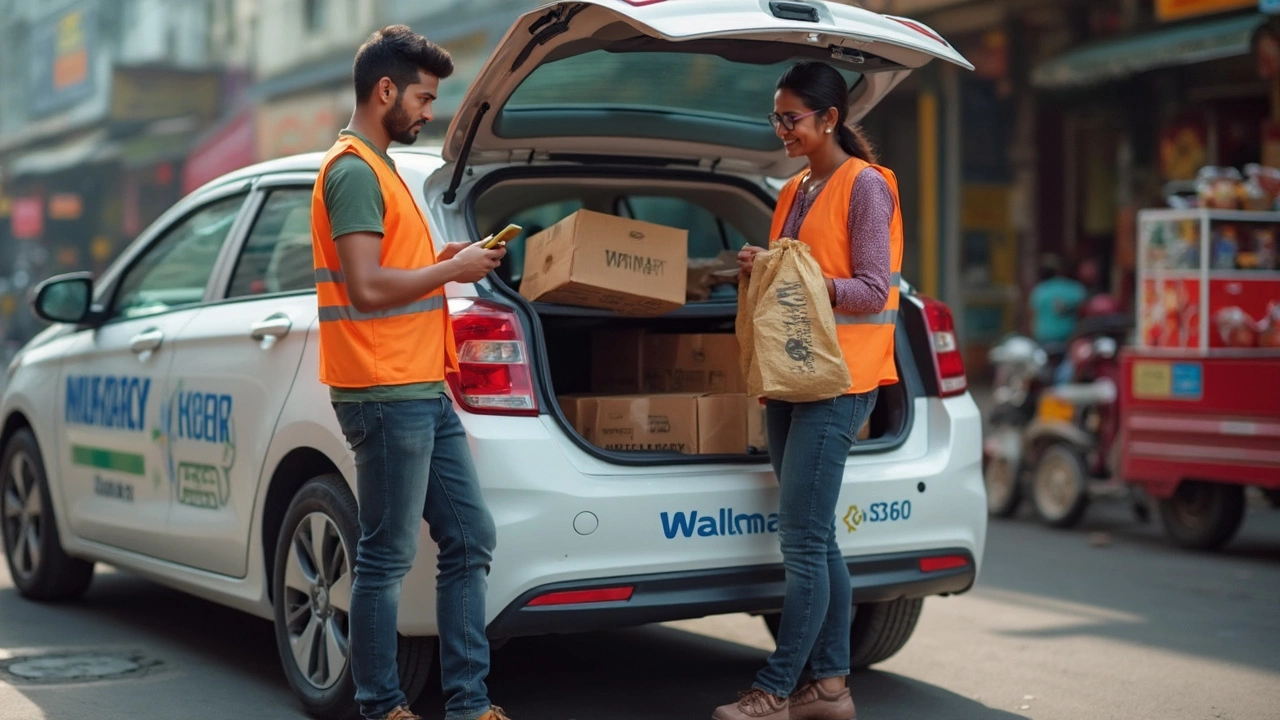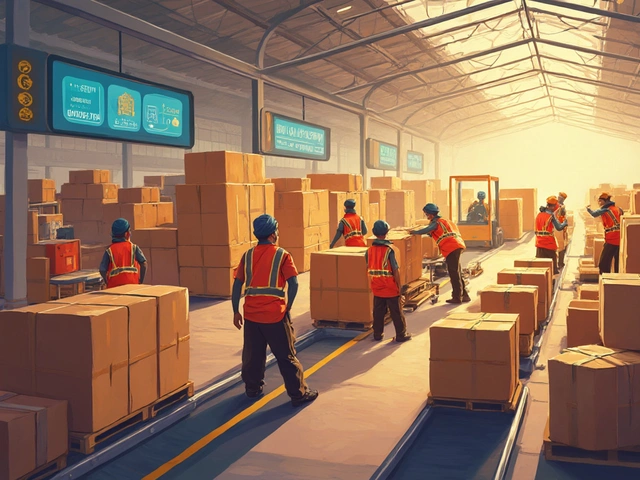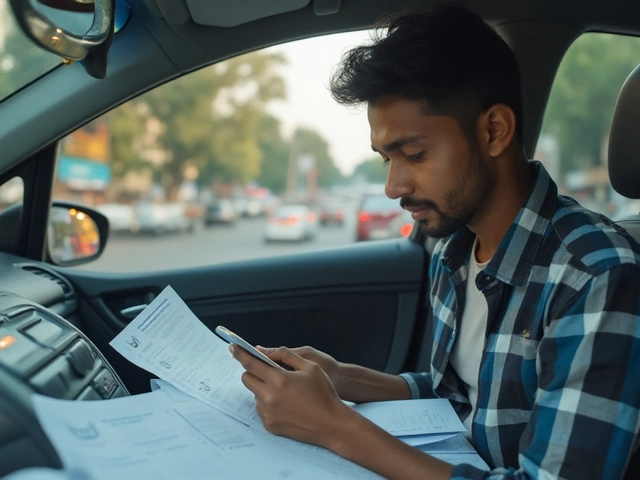Ever wondered how your Walmart groceries actually get from the store to your doorstep? That’s where Walmart Spark drivers come in. These folks aren’t Walmart employees—they’re independent gig workers using a special app to pick up delivery offers, hustle through parking lots, and bring people their essentials, rain or shine. It’s not really like driving for DoorDash or Uber Eats, either. Walmart’s Spark has its own playbook, quirks, and payout system that can catch newbies off guard if they aren’t clued in.
If you’re thinking about jumping into the world of Spark, you’ll be using your own car, phone, and time. Walmart hands out delivery offers through the Spark Driver app, sometimes sending stacks of orders in a single batch, sometimes just one quick trip. There’s a lot that goes into a Spark shift—timing, traffic, beating the mad lunchtime rush at the store, and hoping customers remember to tip after you lug 24-packs of water up three flights of stairs. But for the right person, it can beat sitting at a desk all day.
- How Walmart Spark Works
- Who Can Become a Spark Driver?
- Earnings and Tips: The Real Numbers
- Pros, Cons, and Hidden Surprises
- Best Tips for Spark Success
How Walmart Spark Works
The Walmart Spark driver gig is all about picking up and dropping off orders for Walmart customers. Basically, after you sign up and clear a background check, you use the Spark Driver app on your phone. That’s your whole dashboard: it shows you available offers, lets you accept or reject deliveries, and gives navigation directions straight to the customer's door.
When offers pop up in the app, you'll see the pay, pickup location, drop-off details, and sometimes even the tip upfront. Most orders are either regular store deliveries (where you pick up groceries already bagged and waiting), express deliveries (super-fast, usually smaller loads), or "shop and deliver" jobs (you do the shopping yourself). Batch orders are common, too—sometimes you’re delivering to two or three families in one run.
Here’s a quick look at what the Spark routine usually looks like:
- Get an order notification in the app.
- Choose to accept or ignore (no penalty for ignoring).
- Drive to the Walmart or affiliate store listed in the app.
- Check in—usually by scanning a code or tapping a button.
- Wait for an associate to load your car (don't even need to leave the driver's seat for most grocery orders).
- Drive the items to each customer’s address and deliver as directed (sometimes knock and go, sometimes hand to customer).
Unlike other gig apps, Spark uses a round-robin style to offer jobs, so you don’t have to compete for every order—if your phone is in a good signal spot and you’re close to the store, you get better offers.
The busiest times are usually mid-mornings, late afternoons, and weekends. That’s when lots of folks are ordering groceries, and bonus payouts can pop up to get more drivers on the road. Here’s a small table showing typical order types and pay ranges reported by drivers in 2024:
| Order Type | Typical Time | Average Pay (before tip) |
|---|---|---|
| Regular Delivery | 30-45 min | $10-$18 |
| Express/ASAP | 15-30 min | $8-$15 |
| Shop & Deliver | 30-60 min | $15-$30 |
| Batch Order | 45-75 min | $16-$35 |
No uniform required, but you do need a reliable, clean vehicle (most people use sedans or small SUVs) and a working smartphone. A portable phone charger helps too—those navigation runs zap your battery fast.
Who Can Become a Spark Driver?
Walmart Spark delivery isn’t open to just anyone. The main gatekeepers are the app itself and a background check. If you want to be a Walmart Spark driver, here's what you'll need up front: a valid driver’s license, a decent car, smartphone, and auto insurance. Walmart wants drivers to be at least 18 years old, but in most areas you’ll need to be 21 because a lot of Spark offers involve alcohol.
The application is simple and happens online. You’ll plug in your driving info, upload some documents, and Spark runs a background screening using a company called Checkr. They’ll look out for DUIs, reckless driving, and violent felonies. Minor speeding tickets usually aren’t an issue, but background stuff matters. From what I've seen in forums, approval can take a few days to a couple of weeks depending on your area and how fast Checkr moves.
- You need a car from at least 2000 or newer (depends on your region, but older cars might raise a red flag).
- Car insurance with your name on it—no skimping or using your cousin’s old policy.
- Up-to-date registration—Walmart won’t let anything slip here.
- Working smartphone with good camera (for snapping package delivery pics and taking orders in the app).
- Some physical stamina. A Spark driver’s day can mean plenty of lifting, climbing stairs, or hauling groceries to apartment doors.
Spark does not hire you as an employee—you’re a contractor. That means you handle your own taxes and expenses. Also, don’t expect a company uniform. Most people wear regular clothes, but it doesn’t hurt to look presentable, since you’ll knock on doors and talk to customers sometimes.
Here’s a quick table of requirements you'll want to check before signing up:
| Requirement | Details |
|---|---|
| Age | 18+ (21+ preferred; alcohol deliveries require 21+) |
| Car | 2000 or newer (may vary by region) |
| Insurance & Registration | Your name must be on both, and both must be current |
| Background Check | No violent felonies, DUIs, or major violations in last 7 years |
| Smartphone | iPhone or Android, recent OS version |
If you clear these hurdles, you’re in. There’s not really a Spark ‘interview’—your background and documents do the talking. Just remember, spots go fast in busy areas. Sometimes there’s even a waitlist. Keep your notifications on, and when a slot opens, jump on it fast if you’re serious about making deliveries.
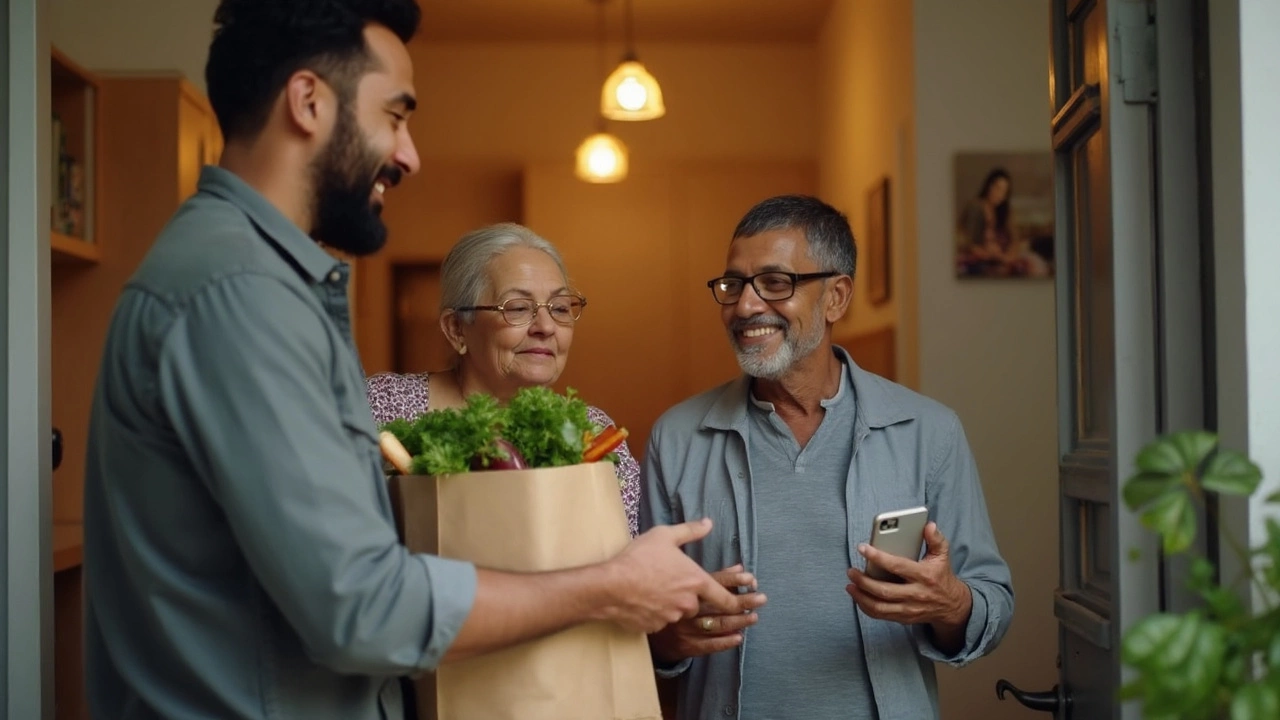
Earnings and Tips: The Real Numbers
Let’s get straight to what everyone really wants to know: how much do Walmart Spark drivers actually make? When you’re cruising around town, snagging grocery runs, and dodging surprise road construction, what does your bank account actually look like at the end of the week?
Based on what Spark drivers across the U.S. have reported, most deliveries pay anywhere from $8 to $25 per trip. The payout depends a lot on distance, order size, and whether you catch a promo or bonus run. It’s not rare to see base offers start around $9, but they can jump if demand spikes or if nobody else wants a long-haul order. Don’t forget, fuel and car upkeep come out of your own pocket, so the real trick is maximizing short, high-paying orders and stacking a few back-to-back runs when you can.
Tips are a big deal here. Customers add them when they order, and tips show up in your offer—so you’ll see what you’re getting before you accept. The Spark app actually breaks out the base pay and the tip so you won’t get any ugly surprises later. If someone tips after delivery, you’ll see it hit your account usually within a couple days. Some Spark drivers say about half of their take-home comes from tips, especially if they’re delivering in higher-income zip codes or during busy weekends.
If you’re a numbers person, here's an easy breakdown. This table sums up average Spark driver earnings from recent surveys and driver forums:
| Type | Range per Order | Average Weekly (20 hrs) |
|---|---|---|
| Base Pay | $8 – $15 | $230 – $350 |
| Tips | $2 – $10 | $60 – $150 |
| Total (Base Pay + Tips) | $10 – $25 | $290 – $500 |
Payouts happen every week, straight to your bank. You can always track your earnings in the Spark Driver app, and it’s clear what you’re owed. Most weeks, you’re looking at average hourly earnings between $14 and $21 after expenses—if you’re picky about orders and keep your costs down. Not every day is amazing, though. You might wait longer for orders during slow hours, or get stuck with a dud batch here and there.
Want to bump up your numbers? Drivers swear by these tips:
- Stick to weekends and evenings—better crowds and more fat tips.
- Focus on areas near busy Walmart stores to cut down on driving time.
- Don’t sleep on promo events or busy weather days—people order more when it’s pouring rain or snowing.
- Stay polite and communicate—sometimes a quick "On my way!" message means an extra few bucks in tips.
If a steady paycheck is your thing, gig life might stress you out. But if you like playing the numbers game and squeezing in work whenever it fits, being a Walmart Spark driver could put real money in your pocket—without chaining you to a desk or a boss’s schedule.
Pros, Cons, and Hidden Surprises
Some folks jump into the Walmart Spark driver gig thinking it’s a breeze, but like any side hustle, it’s got its mix of highs, lows, and stuff nobody warns you about. Here’s a clearer look—no sales pitch, just the real deal.
- Pros:
- Flexible schedule: You pick when you want to work. Log in, grab offers, clock out whenever you want—no managers or set hours breathing down your neck. Great for folks juggling school, another job, or just wanting extra cash.
- Decent pay during busy times: During holidays, weekends, or when everyone’s ordering groceries, pay can add up quick. Some drivers snag $20-25 per hour on high-demand days.
- Low-contact work: Most Spark orders are drop-offs, so you’re not chatting with customers much. Some folks love that part: deliver, get out, move on.
- Cons:
- No guaranteed earnings: If it’s a slow day, you’re waiting on your phone, hoping something pops up. Something is better than nothing, but some days it’s slim pickings.
- Wear on your car: More miles, more potholes, and more gas burns. Repairs come out of your pocket, not Walmart’s.
- App glitches: The Spark app acts up sometimes—frozen screens, wonky routing. It doesn’t matter if you have a new iPhone; outages just happen.
- Tip uncertainty: Not everyone tips, and you’ll see this fast. Tips can change after delivery—yes, customers can tip-bait, making it look like a great order then zeroing tips after you drop it off.
- Hidden Surprises:
- Double and triple orders: Sometimes you’ll accept one delivery and realize you’re running a relay race with three stops barely on the same side of town. The app can group orders that go in totally opposite directions, so watch those batch details.
- Heavy item runs: Those big packs of water bottles or 50-pound dog food sacks? They add up. Better hope you’ve got the arm strength (or a reliable trunk—just ask Max if he’s ever been squished by groceries).
- Store waiting times: Forget instant pickups—sometimes you’re waiting 20+ minutes in the lot for workers to bring out the next order. That wait time? Unpaid.
- Hidden bonuses: Walmart sometimes drops hidden incentives if orders aren’t getting picked up. Quick fingers can grab a $10 or $15 boost on a single trip if demand is spiking.
Here’s how things stack up for most drivers, based on crowdsourced stats from 2024:
| Category | Details |
|---|---|
| Average Pay Per Delivery | $8–$12 (before tips) |
| Average Hourly Earnings | $14–$22 (can spike higher) |
| Wait Time at Stores | 5–25 minutes (not paid) |
| App Downtime | Up to 10% of the week |
Bottom line: Driving for Spark lets you call your own shots, but you’re on the hook for your own costs and time. Knowing the upsides—and the stuff they don’t mention on the sign-up page—helps you find the right groove and avoid burning out.
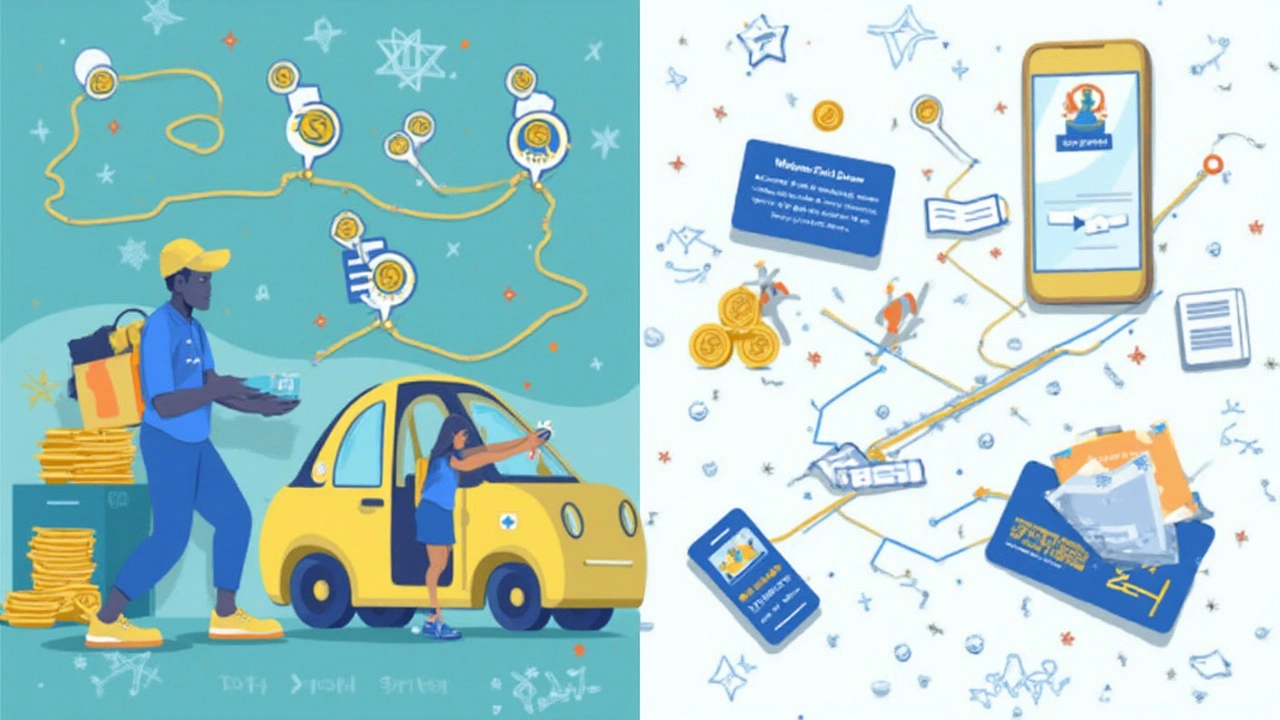
Best Tips for Spark Success
If you want to make the most out of being a Walmart Spark driver, there’s way more to it than just picking up bags and driving around. The top drivers figure out how to work smarter, not harder. Here are a few tips that help you earn more and stress less.
- Know your local stores. Every Walmart location has its flow. Some are speedy, others are slow as syrup. Learn which stores release orders on time—those are gold for back-to-back trips.
- Work the best hours. Peak times are usually late morning through late afternoon, especially on weekends. Groceries fly out after 10 AM and before dinner. Avoid those late-night dead zones unless you like driving empty for an hour.
- Track your mileage and expenses. Gas, oil changes, car washes, and even your phone plan can be tax write-offs. Logging miles using an app (like MileIQ or Everlance) means more cash back come tax season.
- Don’t sleep on tips. Polite messages and fast communication with customers get you noticed. A “thanks, your order’s on the way!” goes a long way for ratings and tips.
- Bundle your time. The app sends you stacked or "batched" orders—these can boost your hourly pay if you’re quick. Just make sure the drop-off addresses aren’t miles apart, or it’s not worth it.
- Watch your acceptance and cancellation rate. Spark rewards drivers who actually complete the jobs they accept. A high cancellation rate means fewer order offers. Don’t accept runs unless you’re ready to do them.
- Have good delivery gear. You’ll want a big reusable grocery bag, an insulated tote for cold stuff, and a phone holder for your car. Trust me, wrestling with loose bags and balancing your phone while driving isn’t fun.
If you’re looking for payoff, check out these real earning stats collected from active Spark drivers over the last few months:
| Day of Week | Avg. Orders/Day | Avg. Earnings (before tips) | Avg. Bonus/Promo |
|---|---|---|---|
| Monday | 9 | $90 | $10 |
| Friday | 14 | $135 | $15 |
| Saturday | 18 | $160 | $20 |
| Sunday | 17 | $150 | $20 |
Drivers who stick to busy days, hustle for batch orders, and keep their app stats strong see the highest pay. It can take a few weeks to get the hang of it, but consistency wins. Don’t forget: the Spark app throws out bonuses now and then for meeting delivery streaks or logging into busy zones, so keep an eye on your notifications.
If you ever get stuck behind a packed pickup line or glitchy app, just breathe. Hit up the Spark community on Reddit or Facebook for local tips—you’ll find all sorts of workarounds and hacks from people who’ve been doing this longer.
